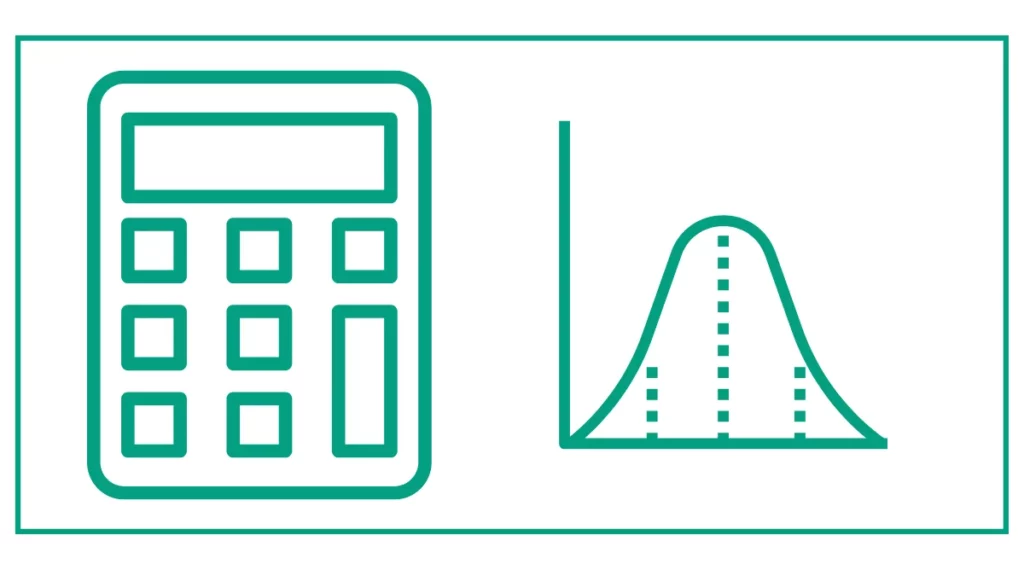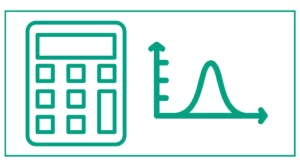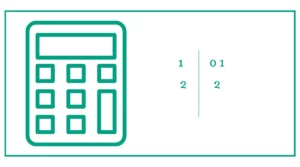Percentile Rank Calculator
The percentile rank calculator allows you to effortlessly determine the percentile of any data value within a set of up to 30 numbers.
Enter the data points and the data value to calculate the percentile rank.
In case you don't know, percentile rank is a way to compare a given score to the scores of other individuals. It is
You can calculate it by dividing the number of scores that are equal to or lower than the given score, by the total number of scores in the population. The resulting percentage (ranging from 0% to 100%) is the percentile rank of the given score.
For example, if a certain score has a percentile rank of 40, it means that 40% of all students got a result equal to or lower than it.
The formula of the percentile rank is:
Percentile rank= Values in set A that are less than or equal to Xm/ Total number of set A values

You might be interested in finding the class rank or the width of the class.
What is a Percentile?
A percentile is a statistical measure that indicates the value below which a given percentage of observations in a dataset falls. In simpler terms, it helps us understand how a specific data point compares to the rest of the data in a set. Percentiles are commonly used in various fields, including education, healthcare, and finance, to assess performance or make comparisons.
For example, if a student scores in the 90th percentile on a standardized test, it means they performed better than 90% of the other test-takers. Similarly, if an infant's weight is in the 50th percentile for their age group, it indicates that their weight is average compared to other infants of the same age.
Understanding Percentile Rank
Percentile rank is closely related to percentiles but provides a slightly different perspective. While a percentile tells us the value below which a certain percentage of data falls, percentile rank tells us the percentage of values in a dataset that are equal to or less than a given value.
To calculate percentile rank, we use the following formula:
Percentile Rank = (L / N) × 100
Where:
L = Number of values less than or equal to the given value
N = Total number of values in the dataset
Let's say we have a dataset of test scores: 65, 70, 75, 80, 85, 90, 95. If we want to find the percentile rank of a score of 80, we would count how many scores are less than or equal to 80 (in this case, 4) and divide it by the total number of scores (7), then multiply by 100:
Percentile Rank = (4 / 7) × 100 ≈ 57.14
This means that a score of 80 is greater than or equal to approximately 57.14% of the scores in the dataset.
How to Calculate Percentile Rank
Calculating percentile rank manually can be time-consuming, especially for larger datasets. However, understanding the process is important. Here's a step-by-step guide to calculate percentile rank:
- Arrange the data in ascending order.
- Count the number of values less than or equal to the given value (L).
- Count the total number of values in the dataset (N).
- Apply the percentile rank formula: (L / N) × 100.
- Round the result to the nearest whole number or desired decimal place.
For example, let's calculate the percentile rank of a student who scored 87 among the following test scores: 78, 83, 85, 87, 89, 90, 92, 95.
- The scores are already in ascending order.
- Count the number of scores less than or equal to 87: L = 4
- Count the total number of scores: N = 8
- Apply the formula: (4 / 8) × 100 = 50
- The percentile rank is 50.
This means that the student's score of 87 is greater than or equal to 50% of the scores in the dataset.
Using a Percentile Rank Calculator
While manual calculations are useful for understanding the concept, using a percentile rank calculator can save time and reduce errors, especially when dealing with larger datasets. Here's how to use the percentile rank calculator provided:
- Enter the data points in the "Data Points" field, separated by commas. You can enter up to 30 values.
- Input the specific value for which you want to calculate the percentile rank in the "Data Value" field.
- Click the "Calculate" button.
- The calculator will display the percentile rank of the given value.
This calculator automatically sorts the data, counts the values less than or equal to the given value, and applies the percentile rank formula. It's an easy-to-use tool that quickly provides accurate results.
Practical Applications of Percentile Rank
Understanding percentile rank has numerous practical applications across various fields. Let's explore two relevant examples:
Example 1: Educational Assessment
Standardized tests often report scores in terms of percentile ranks. This helps students, parents, and educators understand how a student's performance compares to others who took the same test.
Let's say a student scored 1200 on the SATs. The percentile rank calculator shows that this score is in the 78th percentile. This means:
- The student's score is greater than or equal to 78% of all test-takers.
- The student performed better than approximately 78% of their peers.
- About 22% of test-takers scored higher than this student.
This information can be valuable for college admissions, identifying areas for improvement, or setting academic goals.
Example 2: Health and Growth Monitoring
Pediatricians often use percentile charts to track an infant's growth and development. Let's consider an infant's weight:
An 8-month-old baby weighs 8.2 kg. Using the percentile rank calculator with data from growth charts, we find that this weight is in the 60th percentile for their age group. This indicates:
- The baby's weight is greater than or equal to 60% of babies of the same age.
- 40% of babies this age weigh more than 8.2 kg.
- The infant's weight is slightly above average but well within the normal range.
This information helps parents and healthcare providers assess the baby's growth and make informed decisions about nutrition and care.
Benefits of Using a Percentile Rank Calculator
- Efficiency: Quickly calculate percentile ranks for large datasets without manual computation.
- Accuracy: Eliminate human error in calculations, especially for complex datasets.
- Comparison: Easily compare different values within the same dataset.
- Interpretation: Gain a clearer understanding of where a specific value stands in relation to the entire dataset.
- Decision-making: Use percentile ranks to inform decisions in various fields, from education to healthcare and beyond.
Limitations and Considerations
While percentile ranks are useful, it's important to consider their limitations:
- Percentile ranks don't provide information about the actual values or the spread of the data.
- They can be misleading if the dataset is small or not representative of the population.
- Percentile ranks can change if the dataset is updated or if a different group is used for comparison.
References
- Percentiles and Percentile Rank. (n.d.). Percentiles and Percentile Rank • SOGA-Py • Department of Earth Sciences. geo.fu-berlin.de/en/v/soga-py/Basics-of-statistics/Descriptive-Statistics/Measures-of-Position/Percentiles-and-Percentile-Rank/index.html
- Thayer, J. (n.d.). andrews.edu/~thayerj/EDRM611/Summer2001ObjectivesUnit3.htm. andrews.edu/~thayerj/EDRM611/Summer2001ObjectivesUnit3.htm
- Psychology 231. (n.d.). Psychology 231. web.mnstate.edu/malonech/Psy231/Notes/Percentiles%20GW2.htm





